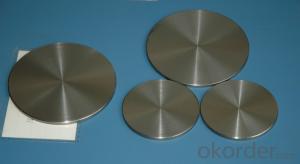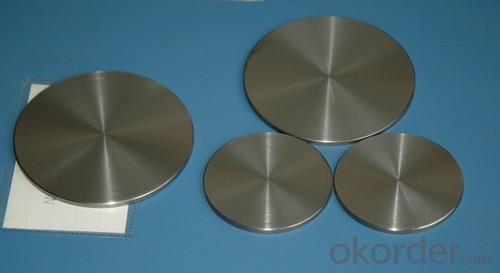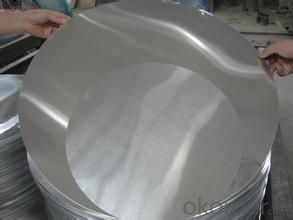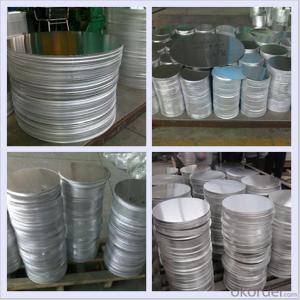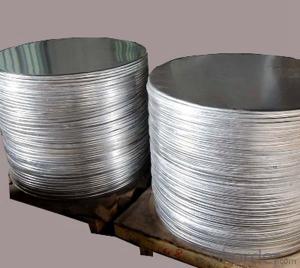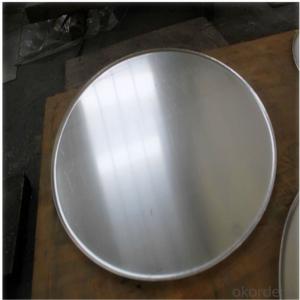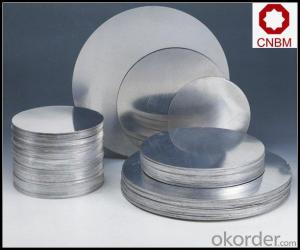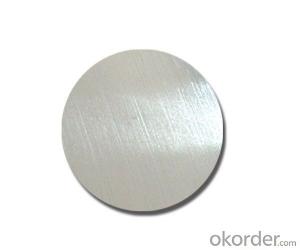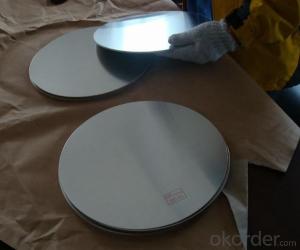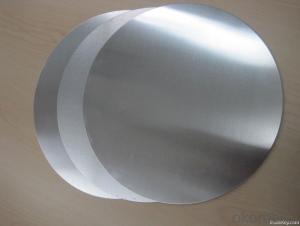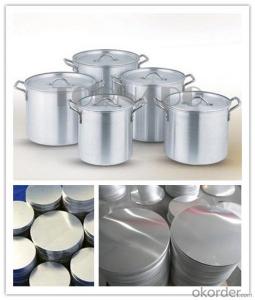Aluminum EN AW-5005 DC Aluminium Circle for Deep-Drawing
- Loading Port:
- Shanghai
- Payment Terms:
- TT OR LC
- Min Order Qty:
- 5 m.t.
- Supply Capability:
- 1000 m.t./month
OKorder Service Pledge
OKorder Financial Service
You Might Also Like
Specification
1. Structure of EN AW - 5005 DC Aluminium Circle for Deep-Drawing Description
EN AW - 5005 DC Aluminium Circle for Deep-Drawing is one semi-finished aluminium material. This coil can be rolled down to aluminium coil,sheet,circle ect. The alloy AA1050 is widly used in building, industry ect. Its weight is much lower than steel. So many customers choosed aluminium material instead of steel.
2. Specification of EN AW - 5005 DC Aluminium Circle for Deep-Drawing
EN AW - 5005 DC Aluminium Circle for Deep-Drawing | |
Main Specification | |
Alloy | AA1xxx (AA1050, AA1060, AA1070, AA1100 etc.) |
AA3xxx (AA3003, AA3004, AA3005, AA3105 etc.) | |
AA5xxx, AA6XXX (AA5052,AA5083, AA5754, AA6061, AA6062 etc.) | |
AA8xxx(AA8011, AA8006 etc.) | |
Temper | H14,H16, H18, H22, H24, H26, H32,O/F, T4, T6, T651 |
Thickmess | 0.01mm-100mm |
Width | 30mm-1700mm |
Standard | GB/T 3880-2006/ASTM |
Special specification is available on customer's requirement | |
3. Application of EN AW - 5005 DC Aluminium Circle for Deep-Drawing
(1).Interior: wall cladding, ceilings, bathrooms, kitchens and balconies, shutters, doors...
(2).Exterior: wall cladding, facades, roofing, canopies, tunnels,column covers , renovations...
(3).Advertisement: display platforms, signboards, fascia, shop fronts...
4. Feature of EN AW - 5005 DC Aluminium Circle for Deep-Drawing
Surfact Quality :
Be free from Oil Stain, Dent, Inclusion, Scratches, Stain, Oxide Dicoloration, Breaks, Corrosion, Roll Marks, Dirt Streaks and other defect which will interfere with use,
Mechenical Property:
Chemical Composite and Mechanical Property
5. Certificate of EN AW - 5005 DC Aluminium Circle for Deep-Drawing
SGS and ROHS(if client request, paid by client), MTC(plant provided), Certificate of Origin(FORM A, FORM E, CO), Bureau Veritas and SGS (if client request, paid by client), CIQS certificate
6. Image of EN AW - 5005 DC Aluminium Circle for Deep-Drawing
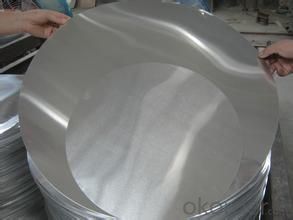
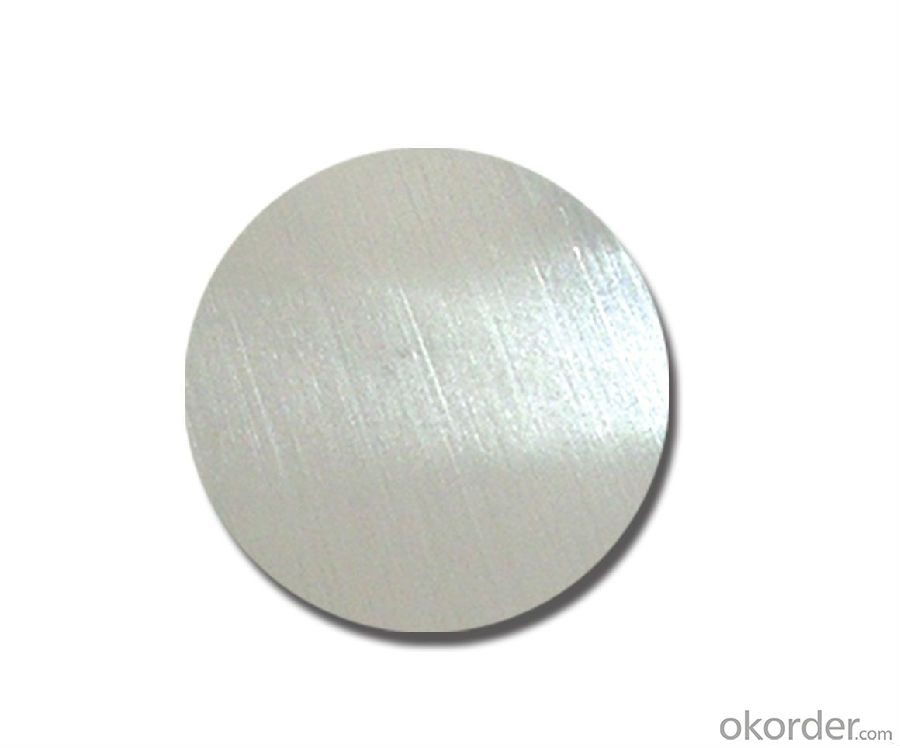
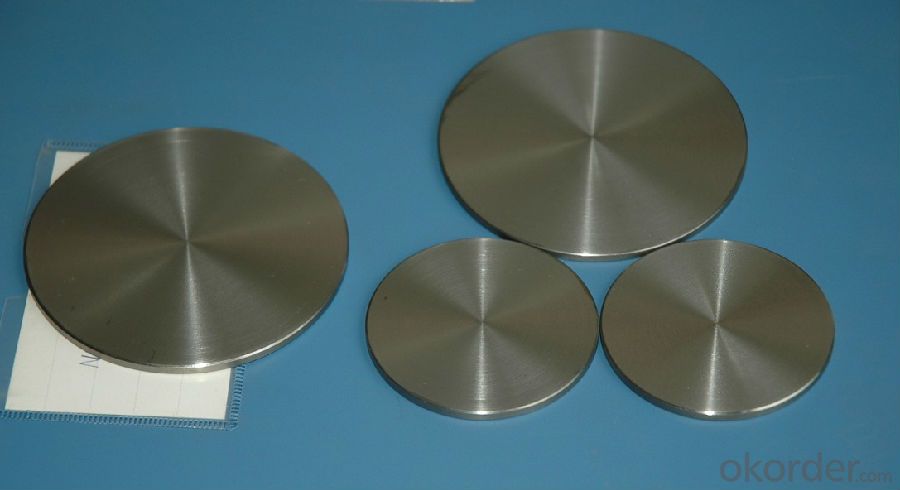
7. Package and shipping of EN AW - 5005 DC Aluminium Circle for Deep-Drawing
First, plastic cloth with drying agent inside; Second, Pearl Wool ; Third, wooden cases with dry agent , fumigation wooden pallets, aluminum surface could cover blue PVC film
8. FAQ
1) What is the delivery time?
Depends on actual order, around 20 to 35 days
2) What is the QC system:
We have QC staff of 20 persons and advanced equipment, each production is with MTC traced from Aluminum ingot lot.
3) What market do you mainly sell to?
Australia, America, Asia, Middle East, Western Europe, Africa etc
- Q: What safety measures should be taken into account while handling or working with aluminum?
- <p>When working with aluminum, it's crucial to follow safety precautions to prevent injuries and health risks. Always wear appropriate personal protective equipment (PPE) such as gloves, safety glasses, and a dust mask to protect against aluminum dust. Ensure good ventilation to avoid inhaling aluminum dust or fumes. Use proper tools and equipment to handle aluminum, as it can become sharp and cause cuts. Be cautious when welding or cutting aluminum, as it can produce harmful fumes and sparks. Store aluminum in a dry place to prevent it from reacting with moisture. Lastly, be aware of the fire hazard associated with aluminum dust and take necessary fire safety measures.</p>
- Q: This question asks for an explanation of the environmental effects caused by the process of smelting aluminum.
- <p>The environmental impact of smelting aluminum is significant. It is an energy-intensive process that contributes to greenhouse gas emissions, primarily due to the high electricity consumption required for the Hall-H茅roult process. This process also generates perfluorocarbons (PFCs), which are potent greenhouse gases. Additionally, the production of aluminum releases particulate matter and sulfur dioxide, contributing to air pollution. The extraction of bauxite, the primary source of aluminum, can lead to deforestation and habitat destruction. Moreover, the waste products, such as red mud, can cause water pollution if not properly managed. Overall, the smelting of aluminum has considerable environmental implications, necessitating the development of more sustainable practices in the industry.</p>
- Q: Is it possible to recycle aluminum in countries other than one's own?
- <p>Yes, aluminum can be recycled in many countries around the world. Recycling aluminum is a global practice due to its economic and environmental benefits. The process involves melting down old aluminum products, which requires significantly less energy compared to producing aluminum from raw materials. This makes aluminum one of the most recycled materials globally, with a well-established recycling infrastructure in various countries. The recycled aluminum is used to manufacture new products, reducing waste and conserving resources.</p>
- Q: What are the methods to prevent aluminum from corroding?
- <p>To prevent aluminum from corroding, several methods can be employed. One effective method is anodizing, which involves applying a protective oxide layer on the aluminum surface to enhance its resistance to corrosion. Another approach is using protective coatings such as paints or enamels that act as a barrier against corrosive elements. Additionally, alloying aluminum with other metals can improve its corrosion resistance. Regular cleaning and maintenance, avoiding contact with corrosive substances, and controlling environmental conditions such as humidity can also help in preventing corrosion.</p>
- Q: This question asks about the methods and steps involved in processing aluminum.
- <p>Aluminum processing involves several key steps: extraction from bauxite ore, refining, and fabrication. Initially, bauxite is mined and then processed to remove impurities. The Bayer process is commonly used to extract alumina (aluminum oxide) from bauxite by dissolving it in a caustic soda solution. The alumina is then smelted in a reduction furnace using the Hall-H茅roult process, where it is dissolved in molten cryolite and electrolyzed to produce pure aluminum. Finally, the aluminum is shaped and fabricated into various products through methods such as casting, extrusion, or rolling.</p>
- Q: Is it possible to recycle aluminum from old products to create new ones?
- <p>Yes, aluminum can be recycled to make new products from old ones. Recycling aluminum is a highly efficient process that requires only 5% of the energy needed to produce new aluminum from raw materials. This process is not only environmentally friendly but also economically viable. Recycled aluminum maintains its quality and can be used to create a wide range of new products, from cans and packaging to automotive parts and construction materials.</p>
- Q: This question asks about the impact of aluminum on human health when it is consumed through food packaging.
- <p>Aluminum is commonly used in food packaging due to its lightweight and durability. However, concerns have been raised about its potential health effects. Aluminum can leach into food, especially in acidic conditions, and be ingested by humans. While the body naturally excretes some aluminum, excessive intake may lead to accumulation, particularly in the brain, bones, and kidneys. Long-term exposure has been linked to neurological disorders, including Alzheimer's disease, and may contribute to bone diseases. However, the scientific consensus is not definitive, and more research is needed to establish a clear causal link. It's important to note that the risk is generally considered low for most people, but it's advisable to minimize exposure, especially for vulnerable populations like infants and those with kidney issues.</p>
- Q: This question asks for methods to prevent the corrosion of pure aluminum when exposed to environmental factors.
- <p>To prevent corrosion of pure aluminum in the environment, one can apply protective coatings such as paints or anodizing, which forms a dense oxide layer on the surface. Additionally, using aluminum alloys that contain elements like copper, magnesium, and silicon can enhance resistance to corrosion. Regular cleaning and maintenance to remove contaminants that may initiate corrosion are also important. In extreme environments, cathodic protection or the use of inhibitors can be employed to further protect aluminum from corrosion.</p>
- Q: This question asks for examples of alloys that include aluminum as one of their components.
- <p>Aluminum is a versatile metal that forms many alloys, enhancing properties like strength, corrosion resistance, and electrical conductivity. Some common aluminum alloys include: 1. 6061, used in aircraft structures and automotive parts due to its good mechanical properties and machinability. 2. 2024, known as 'Alclad', is strong and used in aircraft structures. 3. 7075, one of the strongest aluminum alloys, used in aerospace and military applications. 4. 3003, used for cooking utensils and chemical equipment due to its good corrosion resistance. 5. 5052, used in marine applications and food processing equipment for its excellent corrosion resistance. These alloys are widely used in various industries due to their unique properties.</p>
- Q: Is there a more environmentally friendly method for recycling aluminum?
- <p>Yes, aluminum can be recycled in a more environmentally friendly way. The process of recycling aluminum is already quite efficient, as it requires only 5% of the energy needed to produce new aluminum from raw materials. However, further improvements can be made by optimizing recycling processes, reducing transportation emissions, and increasing the use of recycled aluminum in new products. Additionally, implementing closed-loop recycling systems where aluminum is continuously recycled without loss in quality can minimize waste and environmental impact. Educating consumers about the importance of recycling and improving collection systems can also contribute to more sustainable aluminum recycling practices.</p>
Send your message to us
Aluminum EN AW-5005 DC Aluminium Circle for Deep-Drawing
- Loading Port:
- Shanghai
- Payment Terms:
- TT OR LC
- Min Order Qty:
- 5 m.t.
- Supply Capability:
- 1000 m.t./month
OKorder Service Pledge
OKorder Financial Service
Similar products
Hot products
Hot Searches
Related keywords
